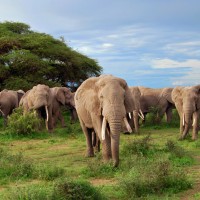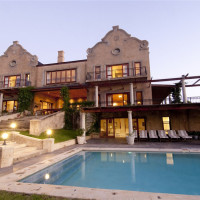The ring-tailed lemur is only found on the island of Madagascar off the east African coast. These primates are related to monkeys and apes, and are easily recognisable by their long black-and-white striped tails. Lemurs are social animals and live in troops of up to 30. In a reversal of gender roles, females fight over territory and water, while males stand back and watch until the fight is over. Lemurs eat fruit, leaves, flowers, tree bark and sap. They mark their territory by spraying their scent from glands on their wrists, which they also use as weapons!
Crib Notes:
- Although a common sight in zoos, ring-tailed lemurs are one of the oldest and most critically endangered species of animal.
- Young lemurs have bright blue eyes, which turn yellow in adulthood.
- In the morning, lemurs sit together cross legged under the sun.
Time of year: Any time of year except January to March when heavy rainfall can make some roads impassable and there is high risk of cyclones in the east and northeast.
Destination: Anjajavy Hotel, on the western coast of Madagascar, is comprised of 24 rosewood villas facing the calm, beautiful sea of the Mozambique Channel. Located in a 550-ha nature reserve, the hotel is a secluded oasis that can only be reached by a private airline-supplied plane, and its surroundings are home to not only the famous Sifaka lemur but chameleon, iguana, the bird of paradise, hummingbirds and over 1,800 floral species, to name a few. Guests can enjoy snorkelling, kayaking, excursions and walks – including cave visits – at no extra cost, and highlights include visits by boat to the local village, where market day takes place under the mango tree every Sunday morning.
Price Guide: From €230 (low season) to €325 (peak season), half-board.





